The automotive landscape is constantly evolving, and the competition between manufacturers presents consumers with a growing array of choices. In this comparison, we take an in-depth look at the Kia Ceed and the Mitsubishi ASX, two popular vehicles that cater to different tastes but still share common ground in several key areas.
Kia Ceed vs Mitsubishi ASX – Which one offers the better deal?
Design and Body Type
The Kia Ceed is elegantly designed as a hatchback, offering a sleek and sporty appearance that appeals to urban drivers seeking style and practicality. With dimensions of 4315 mm in length, 1800 mm in width, and a height of 1447 mm, it strikes a balance between compactness and spaciousness.
In contrast, the Mitsubishi ASX is classified as an SUV, standing taller at 1575 mm with a length of 4239 mm and a width of 1797 mm. The SUV's design provides a commanding road presence and a higher driving position, which many drivers appreciate for increased visibility.
Engine and Performance
Under the hood, the Kia Ceed offers a choice between two petrol engines, including a mild-hybrid version. The power output ranges from 100 HP to a robust 140 HP, with torque figures reaching up to 253 Nm. The Ceed excels in performance with a 0-100 km/h acceleration time ranging from 9.5 to 13.2 seconds and a top speed of up to 197 km/h, making it a dynamic choice for those looking for spirited driving.
The Mitsubishi ASX also presents a versatile engine lineup with options ranging from a compact 91 HP to a powerful 158 HP. It offers traditional petrol, mild-hybrid, and full-hybrid engines, catering to different driving needs. The acceleration for the ASX ranges from a respectable 8.5 seconds to 14 seconds, with a maximum speed hitting 180 km/h. The ASX also boasts impressive torque figures, with up to 270 Nm available, especially in the full-hybrid variant.
Fuel Efficiency
When it comes to fuel consumption, the Kia Ceed shows efficiency across its engine range, delivering figures as low as 6 L/100 km. The mild-hybrid variant is expected to enhance this further but should be confirmed once more detailed testing occurs.
On the other hand, the ASX shines in this department, especially in its full-hybrid version, which boasts an impressive 4.7 L/100 km fuel economy. The traditional petrol models also maintain competitive consumption figures, making it an appealing option for those conscious of running costs.
Interior and Technology
Both the Ceed and the ASX are designed to accommodate five passengers comfortably. The Kia Ceed provides a trunk capacity ranging from 357 to 395 liters, adequate for daily needs and weekend getaways. Inside, it features modern infotainment, including smartphone integration and driver assistance technologies such as lane-keeping assist and adaptive cruise control.
The Mitsubishi ASX, meanwhile, showcases a more spacious interior with a trunk capacity of up to 484 liters, making it an ideal choice for families or those requiring extra cargo space. The ASX is equipped with contemporary technology features as well, including multimedia options and various driver-assistance systems aimed at enhancing safety.
Safety and Emission Standards
When it comes to safety ratings, both vehicles are designed with stringent safety measures. The Kia Ceed achieves a CO2 efficiency class E, while the Mitsubishi ASX offers slightly better emissions, with a top rating of C for lower emissions variants. The ASX achieves CO2 figures as low as 107 g/km, making it an environmentally friendlier choice in its segment.
Conclusion: Which One to Choose?
Choosing between the Kia Ceed and the Mitsubishi ASX ultimately depends on an individual's preferences and priorities. The Ceed appeals to those who prefer a sporty hatchback experience with efficient performance, while the ASX caters to drivers seeking the practicality and higher driving position of an SUV.
Whether you favor the stylish yet functional design of the Ceed or the spacious and versatile nature of the ASX, both models represent commendable options in their respective categories, featuring modern technologies and decent performance capabilities. Consider your lifestyle, needs, and preferences to find the perfect fit among these two impressive contenders.
Here’s where it gets real: The technical differences in detail
Costs and Efficiency:
Looking at overall running costs, both models reveal some interesting differences in everyday economy.
Mitsubishi ASX has a a bit advantage in terms of price – it starts at 20600 £, while the Kia Ceed costs 23500 £. That’s a price difference of around 2915 £.
Fuel consumption also shows a difference: Mitsubishi ASX manages with 4.40 L and is therefore distinct more efficient than the Kia Ceed with 6 L. The difference is about 1.60 L per 100 km.
Engine and Performance:
Under the bonnet, it becomes clear which model is tuned for sportiness and which one takes the lead when you hit the accelerator.
When it comes to engine power, the Mitsubishi ASX has a somewhat edge – offering 158 HP compared to 140 HP. That’s roughly 18 HP more horsepower.
In acceleration from 0 to 100 km/h, the Mitsubishi ASX is a bit quicker – completing the sprint in 8.50 s, while the Kia Ceed takes 9.50 s. That’s about 1 s faster.
In terms of top speed, the Kia Ceed performs hardly perceptible better – reaching 197 km/h, while the Mitsubishi ASX tops out at 180 km/h. The difference is around 17 km/h.
There’s also a difference in torque: Mitsubishi ASX pulls minimal stronger with 270 Nm compared to 253 Nm. That’s about 17 Nm difference.
Space and Everyday Use:
Whether family car or daily driver – which one offers more room, flexibility and comfort?
Both vehicles offer seating for 5 people.
In curb weight, Mitsubishi ASX is barely noticeable lighter – 1296 kg compared to 1298 kg. The difference is around 2 kg.
In terms of boot space, the Mitsubishi ASX offers somewhat more room – 484 L compared to 395 L. That’s a difference of about 89 L.
In maximum load capacity, the Mitsubishi ASX performs to a small extent better – up to 1596 L, which is about 305 L more than the Kia Ceed.
When it comes to payload, Kia Ceed hardly perceptible takes the win – 490 kg compared to 449 kg. That’s a difference of about 41 kg.
Who wins the race?
The Mitsubishi ASX proves to be outperforms in nearly all aspects and therefore becomes our DriveDuel Champion!
Mitsubishi ASX is the better all-rounder in this comparison.
Costs and Consumption
View detailed analysis
Engine and Performance
View detailed analysis
Dimensions and Body
View detailed analysis
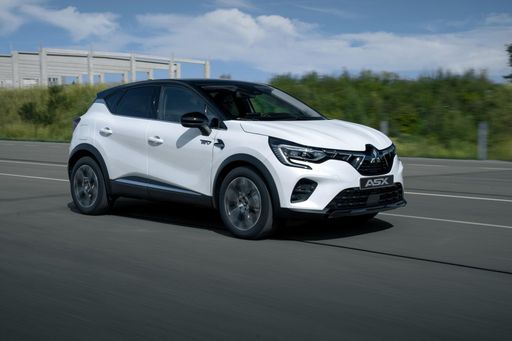 @ Mitsubishi Motors Corporation
@ Mitsubishi Motors Corporation
Mitsubishi ASX
Kia Ceed
The Kia Ceed is a sensible, stylish hatchback that gives buyers more than they'd expect for the money, blending practical space with crisp, modern looks. It drives with measured confidence and comes loaded with user-friendly kit, so you can enjoy daily life behind the wheel without breaking into a sweat.
details @ Kia Corporation
@ Kia Corporation
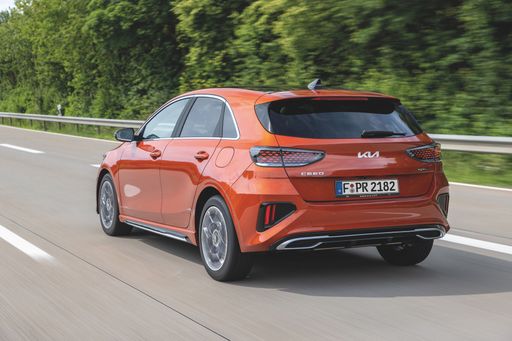 @ Kia Corporation
@ Kia Corporation
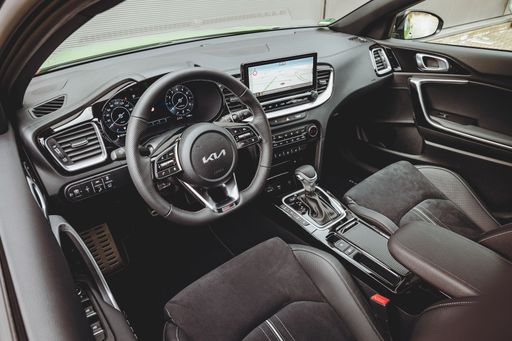 @ Kia Corporation
@ Kia Corporation
Mitsubishi ASX
The Mitsubishi ASX is a compact crossover that mixes practicality with a no-nonsense personality, making it an easy choice for buyers who want sensible space without the showroom theatrics. It won't set your pulse racing, but its composed ride and user-friendly kit make it a dependable companion for daily errands and weekend escapes — reliable rather than flashy.
details @ Mitsubishi Motors Corporation
@ Mitsubishi Motors Corporation
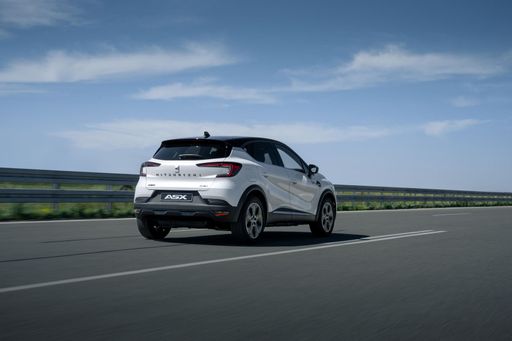 @ Mitsubishi Motors Corporation
@ Mitsubishi Motors Corporation
 @ Mitsubishi Motors Corporation
@ Mitsubishi Motors Corporation
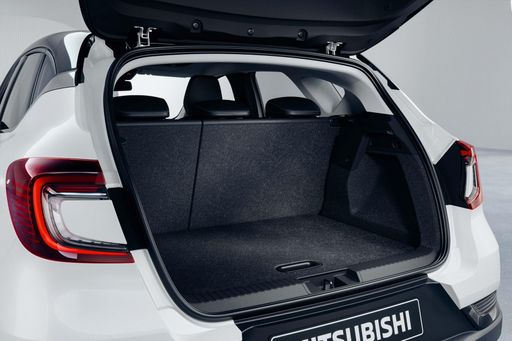 @ Mitsubishi Motors Corporation
@ Mitsubishi Motors Corporation
 @ Kia Corporation
@ Kia Corporation
|
 @ Mitsubishi Motors Corporation
@ Mitsubishi Motors Corporation
|
|
|
|
Costs and Consumption |
|
|---|---|
|
Price
23500 - 26300 £
|
Price
20600 - 32500 £
|
|
Consumption L/100km
6 - 6.4 L
|
Consumption L/100km
4.4 - 6 L
|
|
Consumption kWh/100km
-
|
Consumption kWh/100km
-
|
|
Electric Range
-
|
Electric Range
-
|
|
Battery Capacity
-
|
Battery Capacity
-
|
|
co2
137 - 146 g/km
|
co2
99 - 135 g/km
|
|
Fuel tank capacity
50 L
|
Fuel tank capacity
48 L
|
Dimensions and Body |
|
|---|---|
|
Body Type
Hatchback
|
Body Type
SUV
|
|
Seats
5
|
Seats
5
|
|
Doors
5
|
Doors
5
|
|
Curb weight
1298 - 1372 kg
|
Curb weight
1296 - 1493 kg
|
|
Trunk capacity
357 - 395 L
|
Trunk capacity
348 - 484 L
|
|
Length
4315 mm
|
Length
4239 mm
|
|
Width
1800 mm
|
Width
1797 mm
|
|
Height
1447 mm
|
Height
1575 mm
|
|
Max trunk capacity
1253 - 1291 L
|
Max trunk capacity
1458 - 1596 L
|
|
Payload
478 - 490 kg
|
Payload
397 - 449 kg
|
Engine and Performance |
|
|---|---|
|
Engine Type
Petrol, Petrol MHEV
|
Engine Type
Petrol, Petrol MHEV, Full Hybrid
|
|
Transmission
Manuel, Automatic
|
Transmission
Manuel, Automatic
|
|
Transmission Detail
Manual Gearbox, Dual-Clutch Automatic
|
Transmission Detail
Manual Gearbox, Dual-Clutch Automatic, Automatic Gearbox
|
|
Drive Type
Front-Wheel Drive
|
Drive Type
Front-Wheel Drive
|
|
Power HP
100 - 140 HP
|
Power HP
91 - 158 HP
|
|
Acceleration 0-100km/h
9.5 - 13.2 s
|
Acceleration 0-100km/h
8.5 - 14 s
|
|
Max Speed
178 - 197 km/h
|
Max Speed
168 - 180 km/h
|
|
Torque
172 - 253 Nm
|
Torque
160 - 270 Nm
|
|
Number of Cylinders
3 - 4
|
Number of Cylinders
3 - 4
|
|
Power kW
74 - 103 kW
|
Power kW
67 - 116 kW
|
|
Engine capacity
998 - 1482 cm3
|
Engine capacity
999 - 1789 cm3
|
General |
|
|---|---|
|
Model Year
2024
|
Model Year
2024 - 2025
|
|
CO2 Efficiency Class
E
|
CO2 Efficiency Class
D, C
|
|
Brand
Kia
|
Brand
Mitsubishi
|
What drivetrain options does the Kia Ceed have?
The Kia Ceed is available as Front-Wheel Drive.
The prices and data displayed are estimates based on German list prices and may vary by country. This information is not legally binding.
